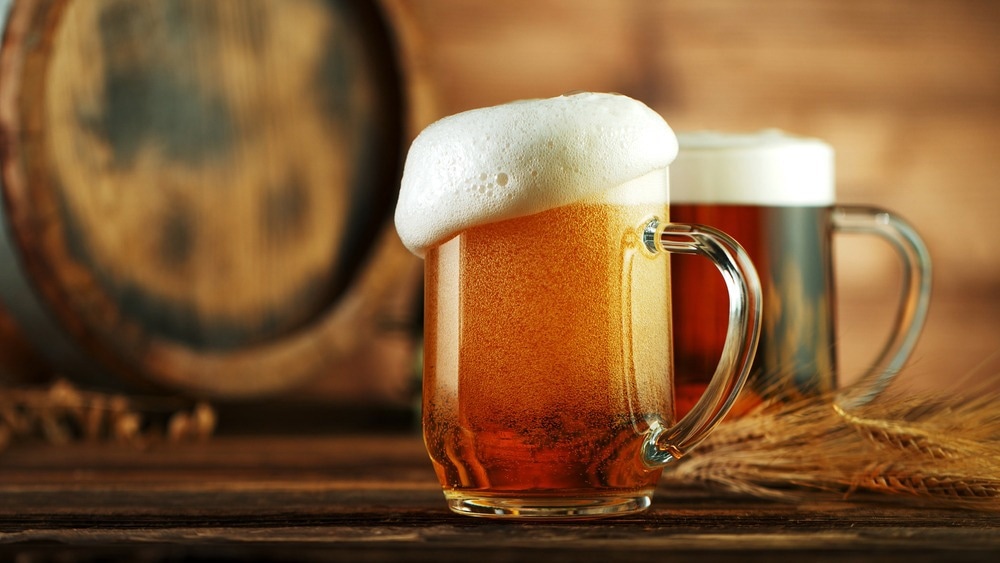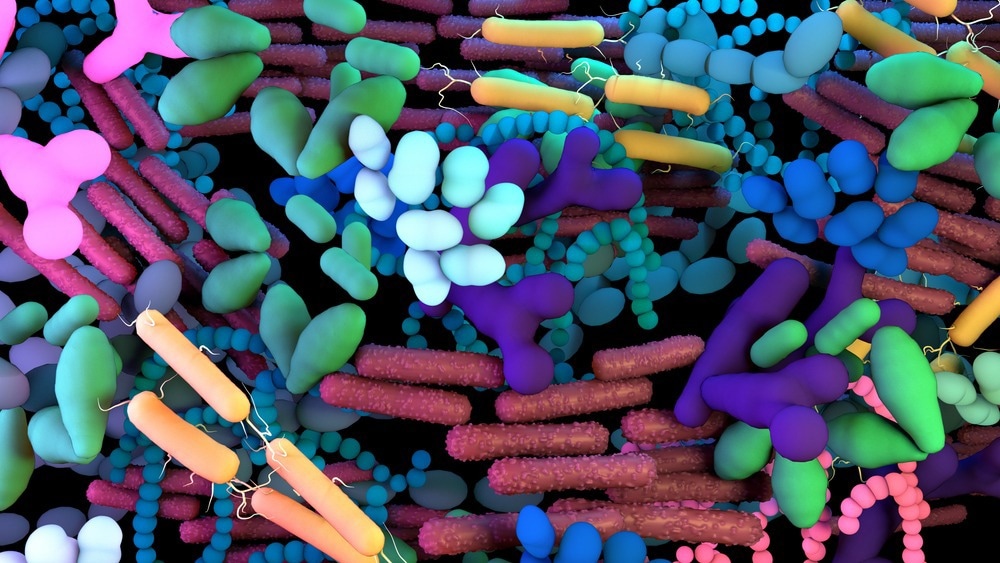Microorganisms are everywhere
Microbiology and food and drink
Our Microbiome
Microbiology and Common Diseases
Not all bad
References
Microorganisms are everywhere
From preserving our food to keeping us healthy, microorganisms are everywhere. Although they are primarily associated with causing disease, microorganisms such as bacteria have many applications and play a vital part in keeping our bodies and minds healthy.

Image Credit: Jag_cz/Shutterstock.com
Microbiology and food and drink
Microorganisms have been used for thousands of years to prolong the shelf life of foods and drinks through fermentation. Fermentation is the process of oxidizing carbohydrates to produce principally organic acids, alcohol, and carbon dioxide. Some of these preserved foods also have added health benefits, such as improved nutritional value or added probiotic properties.
Bacteria is the most common microorganism used in these processes, but yeasts and other molds have been implicated. The most widely used bacteria in these processes are the Lactobacillaceae family, which break carbohydrates down into lactic acid. Other common bacteria used in the fermentation process include Acetobacter and Bacillus.
Yeasts from the Saccharomyces family are used in making alcoholic drinks, such as beer, and in baking. Saccharomyces cerevisiae is the most widely used yeast and plays an incredibly important role in the food and drink industry.
The fermentation of alcohol is thought to have been developed as long ago as 4000 to 6000 years ago in Egypt and Sumerian. Around this time, the Egyptians also perfected the process of other forms of fermentation.
There is evidence that other forms of fermentation were in use before this time. For example, it is thought that cheese making was developed around 8000 years ago in Iraq.
Another growing sector of the food and drink industry is probiotics. Probiotics can be described as "live microorganisms that, when administered in adequate amounts, confer a health benefit on the host". The research surrounding them indicates that they successfully treat conditions such as diarrhea associated with Clostridium difficile, irritable bowel syndrome, anxiety, and depression.
The most common bacteria used as probiotics belong to the Lactobacillus, although research constantly discovers new species with properties that benefit us and our microbiota.
Our Microbiome
Our bodies are home to complex communities of bacteria that ensure our physical and mental health. There are communities of bacteria specific to every niche of our bodies, including our skin, nose, mouth, and gut. The microorganisms that colonize our gut are the most well studied as well as being the densest and most diverse community.
The variation in pH, oxygen and other physical attributes in the gut create many different environments, supporting many microorganisms. Many organisms in the gut are either eukaryotes, archaea, or bacteria, with bacteria making up the largest proportion.
Dysbiosis of the gut microbiome has been implicated in many different disorders such as inflammatory bowel syndrome, diabetes, asthma, and multiple sclerosis. It has also been connected to mental disorders such as depression, anxiety, and autism. The broader implications of the "gut-brain" link and the microbiome's effects on the immune, endocrine, and central nervous systems are being explored.
Although the gut microbiome contains over 1000 species of bacteria and attracts a lot of interest and research, the other bacterial communities on our bodies all play their role in our health.
The microbiome in our mouths is just as complex as the gut, although heavily dominated by streptococcus species. Our skin microbiomes differ vastly depending on the properties of their environment. The vaginal microbiome attracts a lot of interest as it plays a large role in establishing a newborn microbiota. It is highly structured and changes depending on the woman's hormone status.

Image Credit: Design_Cells/Shutterstock.com
Microbiology and Common Diseases
Some of the most common diseases are caused by microorganisms, the majority of which are bacteria.
One of the most common bacterial illnesses is Klebsiella-caused pneumonia. It is a common condition in patients of all ages and usually does not cause serious concern unless the patient has underlying conditions, is geriatric or pediatric. It presents with a fever, increased white blood cell count, and an infiltrate on a chest x-ray. Elderly patients usually only display with the infiltrate.
Another common condition caused by a bacterial infection is food poisoning. Food poisoning encompasses a wide range of disorders that range in severity from mild, including nausea and vomiting, to life-threatening. Some forms of food poisoning can even cause paralysis and liver failure.
According to the world health organization (WHO), in 2010, there were approximately 600 million cases of food poisoning, over half of which were caused by bacteria. The most common causes of bacterial food poisoning are bacteria from the Campylobacter, Salmonella, and Listeria species, although the Enterobacteriaceae family were highlighted as a severe risk in 2017.
Urinary tract infections (UTIs) are a common concern in hospitals, especially when a catheter is used. As with pneumonia, they do not pose a serious health concern in patients without underlying conditions, only posing a threat in the elderly and immunocompromised.
Bacteria adapted to thrive in the urinary tract produce adhesins, siderophores, and toxins to help them dominate the challenging environment. They routinely are transmitted between people, although they have also been known to be transmitted through water and possibly food. The likelihood of getting another UTI is far greater once you've had one.
The most common bacteria found to cause UTIs is Escherichia coli. Due to the increased use of antibiotics in treating these infections, antibiotic resistance has been observed and could pose a serious threat in the future.
Not all bad
Although some microorganisms cause disease, a large proportion of them also help us in our everyday lives. The preservation of food, probiotics, and our microbiome are all examples of the good that bacteria and other microorganisms can do for us.
References:
- Chlebicz, & Śliżewska, K. (2018). Campylobacteriosis, Salmonellosis, Yersiniosis, and Listeriosis as Zoonotic Foodborne Diseases: A Review. International Journal of Environmental Research and Public Health, 15(5), 863. https://doi.org/10.3390/ijerph15050863
- Cunha, B. A. (2001). Pneumonia in the Elderly. Clinical microbiology and infection, 7 (11), 581-588. https://doi.org/10.1046/j.1198-743x.2001.00328.x
- Fahad, A. (2021). Microbiome. Saudi Medical Journal, 42(2), 146–150. https://doi.org/10.15537/smj.2021.2.25587
- Fijan, ter Haar, J. A., & Varga, L. (2021). Chapter 1 - Probiotic Microorganisms and Their Benefit to Human Health. In Advances in Probiotics (pp. 3–22). Elsevier Inc. https://doi.org/10.1016/B978-0-12-822909-5.00001-0
- Foxman. (2010). The epidemiology of urinary tract infection. Nature Reviews. Urology, 7(12), 653–660. https://doi.org/10.1038/nrurol.2010.190
- Lloyd-Price, Abu-Ali, G., & Huttenhower, C. (2016). The healthy human microbiome. Genome Medicine, 8(1), 51–51. https://doi.org/10.1186/s13073-016-0307-y
Further Reading
Last Updated: Jul 15, 2022